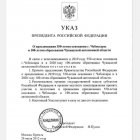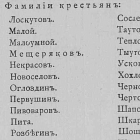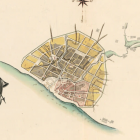City of Cheboksary
The capital of the Chuvash Republic - Cheboksary (Chuvash: Shupashkar) - is a city with a centuries-old history. Cheboksary was first mentioned in written sources in 1469. The Russian troops stopped here on their way to the Khanate of Kazan. However, Cheboksary was populated considerably earlier. According to archaeological excavations, there was a Bulgarian-Chuvash settlement on this site from the turn of the 13th–14th centuries.
In 1555, after the voluntary accession of Chuvash region into the Moscow state, a fortress was built there to protect the southern borders of the country and Cheboksary district was established. By the end of the 17th century, the town lost its defensive functions and began to develop as one of the trading centers of Volga region. In 1781, Cheboksary was granted the status of a provincial town of Kazan Governorate.
The development of trade, spread of Orthodoxy and mass conversion of the Chuvash people to Christianity led to the flowering of architecture in the town - dozens of churches and cathedrals were built here. Despite the fact that in the 18th-19th centuries emphasis was placed on the development of trade, not industry, there were brick, tannery, tallow and bell plants in the town. Large quantities of malt were produced as well. By the early 20th century, the town, which occupied the area of about 600 hectares, had a population of 5,100 people.
After the establishment of the Chuvash autonomy in 1920, Cheboksary became the capital city. The new status had a positive effect on the development of the city. In 1940, Cheboksary had a population of more than 40,000 people, and over 100,000 people in 1958. As of January 1, 2019, more than 500,000 people live in Cheboksary; the area of the city (with the Volga area) reaches 25,000 hectares.
Today Cheboksary is a modern industrial and cultural center of the Volga region. A powerful economic potential - machine-building, metalworking, textile and power industry enterprises - is concentrated here. The city has a developed transport, engineering and social infrastructure. This is a place where the history and modernity, the Russian and the Chuvash cultures coexist. They are closely interwoven and complement each other.
Cheboksary is also one of the most beautiful green cities in Russia. During the voyage along the Volga River, Catherine II was impressed by its views. Cheboksary, which is located on both banks of the Volga, has a unique relief, significant height differences, pristine broadleaved and pine forests, picturesque valleys of small rivers and the majestic Volga - all these factors form an individual image of the city. The Victory Park, the A. G. Nikolayev Children's Park (in memory of cosmonaut A. G. Nikolayev), the Lakreev Forest, the Berendei Forest, the Guzovsky Grove, the Botanical Garden and a lot of other green areas are the favorite destinations for residents and visitors to the capital of the republic, who want to relax.
The collection, which is devoted to the 550th anniversary of the founding of Cheboksary, includes official and archival documents, studies, statistical, cartographic and visual materials.





